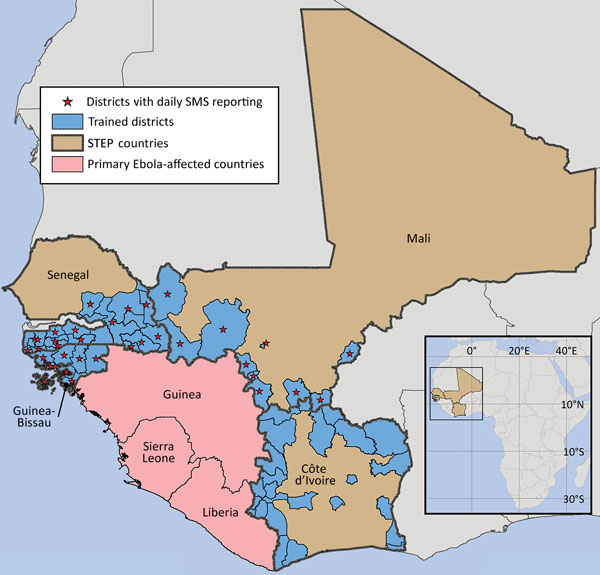Volume 23, Supplement—December 2017
SUPPLEMENT ISSUE
Global Health Security Supplement
Detect
Surveillance Training for Ebola Preparedness in Côte d’Ivoire, Guinea-Bissau, Senegal, and Mali
Figure 2

Figure 2. Districts and regions in 4 countries in West Africa participating in program training and daily SMS zero-reporting, 2015. The city of Bamako in Mali is administratively divided into 6 discrete communes, each equivalent to 1 health district. These are too small to individually illustrate on the map, so only Bamako, comprising all 6 communes, is shown. STEP, Surveillance Training for Ebola Preparedness; SMS, short message service. Map created by Andrew Berens. Sources: Global Administrative Areas (http://gadm.org); ERSI Data & Maps 2005.
1Members of STEP Working Group are listed at the end of this article.
Page created: January 08, 2018
Page updated: January 08, 2018
Page reviewed: January 08, 2018
The conclusions, findings, and opinions expressed by authors contributing to this journal do not necessarily reflect the official position of the U.S. Department of Health and Human Services, the Public Health Service, the Centers for Disease Control and Prevention, or the authors' affiliated institutions. Use of trade names is for identification only and does not imply endorsement by any of the groups named above.